
Most plastics are made from fossil fuels like oil and natural gas, which release toxic emissions when extracted from our earth. Only 1% of all the plastic bags used are recycled, the rest end up in landfills and oceans. Plastic pollution is a global problem. Aside from that, improper management of the use and disposal of plastic bags also contributes to such pollution. And this total is still smaller than the amount of food waste we throw away 36.4 million tons per year. One of the most significant and global effects of plastic bags is how they are made. The first commercially available plastic product was launched in 1907 but mass production didnt start until 1952.

our offline carbon footprint calculator ). Plastic Production . In 2019, the CIEL estimated that production and incineration of plastic would add 850 million metric tons of greenhouse gases to the atmosphere equivalent to 189 coal-fired power plants. The problem with plastic bags. The report summarizes the key conclusions on the environmental performance of eight different single-use plastic products compared to their alternatives. This is known as the Great Pacific Garbage Patch. Like the rest of the world, China, the world's biggest waste producer, is taking significant steps to ban the use of plastic bags by 2022 after banning free plastic bags in 2010. Why plastic is bad for the environment?Bring your own shopping bag. Stop buying bottled water. Bring your own thermos to the coffee shop. Choose cardboard over plastic bottles and bags. Say no to straws. Get the plastic off your face. Skip the disposable razor. Switch from disposable diapers to cloth. The U.S. ranks second in the world in total plastic waste generated per year, behind only China though when measured per capita, the U.S. outpaces China. Its production uses up 8% of our oil resource. Plastic bags, which are made of polythene, causes pollution all its life from manufacturing to disposal. #23- The River Yangtze, the top polluting river located in China, received approximately 330,000 tonnes of plastic and plastic bags in 2015 Plastic bags are used for an average of 25 minutes before they are disposed of and forgotten. Plastic Industry will produce 881 billion pounds of plastic, 40% of this is thrown away in 20 minutes.
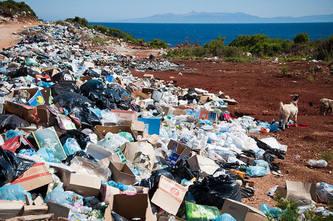
Take the sea, for instance. 1.

A further 12% was incinerated, and a whopping 79% has ended up in landfills or polluting the environment.

By 2050 this could rise to 2.8 gigatons of carbon dioxide per year ExxonMobil contributes 5.9% of total single use plastic waste. And these bags are 100 per cent biodegradable and pollution-free. Polyethylene PE ist the most commonly used plastic for plastic bags. Plastic bags are difficult and costly to recycle and most end up on landfill sites where they take around 300 years to photodegrade. It also includes an overview of policy actions and instruments that many member These costs are ultimately passed onto residents and businesses. According to Taylor (2016), there are more than 8 million tonnes of plastics enter the ocean each year and marine experts fear there could be more plastic than fish in the ocean by 2050. According to the Environmental Protection Agency, the country produced 35.7 million tons of plastic waste in 2018, more than 90% of which was either landfilled or burned.

Plastic shopping bags have heavily contributed to a huge amount of plastic debris found in the North Pacific Ocean. Its manufacturing process is harmful to the environment and it remains toxic to the environment after you throw it away. Plastic shopping bags also represent a large part of plastic pollution on land. Here, they kill thousands upon thousands of marine animals. Approximately 7 billion of the 9.2 billion tonnes of plastic produced from 1950-2017 became plastic waste, ending up in landfills or dumped. Plastics Set to Release More GHG Emissions in the US than Coal by 2030 Plastic pollution is more than just waste that is discarded and left to rot in the environment, its production is also contributing to air pollution and global warming.

More: Plastic Waste Facts In the US alone, more than 100 People in Denmark use an average of four plastic bags per year. For context, this is roughly equivalent to the mass of two-thirds of the world population.
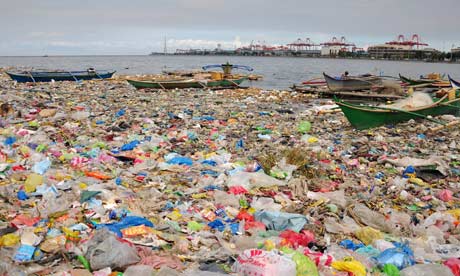
The first plastic bag was made in 1950. The Extraction of Plastics Raw Material: Oil. Plastic pollution is a global problem. Plastic bags are extremely resistant to deterioration and can take anywhere from 20-1000 years to decompose.

Plastic bags replaced by plastic bags. Benzene. Plastic takes more than 400 years to decompose.

Plastic Bag Facts: Stats About Pollution & Recycling The effects of plastic bags are undeniable. Plastic bags are a huge problem. As a result of the heavy use of toxic chemicals in the process, paper is responsible for 70 times more air pollution and 50 times more water pollution than plastic bag production according to a Washington Post analysis, resulting in more toxicity to humans and the environment than HDPE bags.

Given the importance that tourism and eco-tourism play in Queenslands economy and job market, the cost of plastic pollution is substantial. It only takes about 14 plastic bags for the equivalent of the gas required to drive one mile. 1. In other words, we throw away ten Its time to make things right and ensure positive action to tackle plastic pollution. It is estimated to be double the size of Hawaii, and could even be as large as the entire continental US.

The manufacture of plastic bags uses cancer-causing chemicals such as benzene and vinyl hydrochloride, and the toxic by-products pollute our air, water and soil. The growing rate of plastic production raises problems in many areas of our society. The estimated annual loss in the value of plastic packaging waste during sorting and processing alone is US$ 80- 120 billion.

Cigarette butts whose filters contain tiny plastic fibers are the most common type of plastic waste found in the environment. And fewer than 3 per cent are recycled. 4.
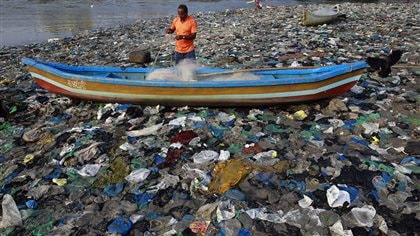
Plastic production , first developed in the 19th century soared during the 20th century, from 2 million metric tons in 1950 to 348 million metric tons in 2017, and is expected to double in capacity yet again by 2040. 8 Plastic Pollution Statistics to Know About. The lands that have filled up with plastic bag are very dangerous to flora and fauna. Some 160,000 of them are used every second. The top 20 producers of single use plastic.
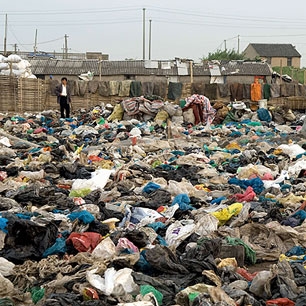
Death of animals. Sinopec 5.3%. Approximately 7 billion of the 9.2 billion tonnes of plastic produced from 1950-2017 became plastic waste, ending up in landfills or dumped. [19] The World Generates 300 Million Tonnes of Plastic Waste A Year.

Burning 1 kg of oil creates about 3 kg of carbon dioxide (see e.g. Waste and plastic pollution.


In 2019, the CIEL estimated that production and incineration of plastic would add 850 million metric tons of greenhouse gases to the atmosphere equivalent to 189 coal-fired power plants. Most people born in 1950 are dead Plastic bags, similar to animals also affect plants. Plastic bags may get entangled with plants preventing them from getting adequate sunlight and nutrition; thus preventing them from carrying out photosynthesis and respiration. This may eventually lead the plant towards death due to loss of metabolic processes. The cost on local government to manage litter in NSW is approximately $132 million per year. Dow 5.6%. Americans use an average of 365 plastic bags per person per year.


In other words: Per kg of plastic, about 6 kg carbon dioxide A total of 300 million tons of. 5. [2] When you consider historical

It isnt surprising that waste plastic bags seem to be everywhere. We are producing over 300 million tons of plastic every year, 50% of which is single-use plastics.
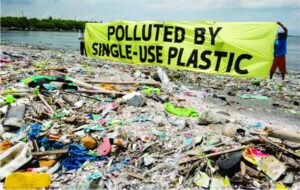
A plastic bag takes up to 1000 years to photo-degrade, which is a way in which the plastic doesnt actually break down, but instead turns into microplastics that continue to pollute the environment. Plastic pollution can alter habitats and natural processes, reducing ecosystems ability to adapt to climate change,
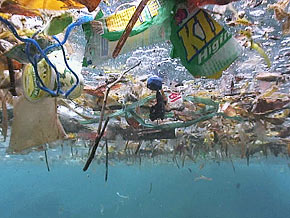
In the US alone, more than 100 billion plastic bags are used each year thats more than 300 bags per person.CLEANSWEEP volunteers in Massachusetts collected 5,712 pounds of plastic bags in one of their cleanup campaigns. It is one of the most common forms of litter.It is estimated that the world uses 500 billion to 1 trillion bags in a year.
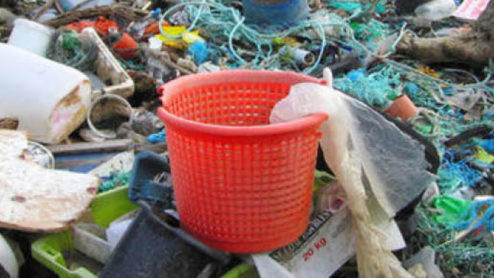
Here are 4 main ways that plastic causes air pollution.

Single use plastic bags are easily blown by wind and carried long distances getting stuck in trees or going into storm drains.

Indorama Ventures 4.6%.
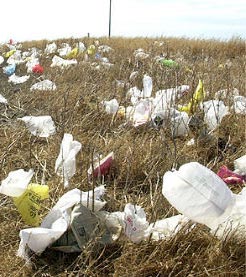
The measure has helped reduce plastic bag consumption by 35 per cent and raise a total of 10,460 million Colombian pesos (about $3.6 million), says Andrs Velasco, vice minister of Finance and Public Credit of Colombia.
 Most plastics are made from fossil fuels like oil and natural gas, which release toxic emissions when extracted from our earth. Only 1% of all the plastic bags used are recycled, the rest end up in landfills and oceans. Plastic pollution is a global problem. Aside from that, improper management of the use and disposal of plastic bags also contributes to such pollution. And this total is still smaller than the amount of food waste we throw away 36.4 million tons per year. One of the most significant and global effects of plastic bags is how they are made. The first commercially available plastic product was launched in 1907 but mass production didnt start until 1952.
Most plastics are made from fossil fuels like oil and natural gas, which release toxic emissions when extracted from our earth. Only 1% of all the plastic bags used are recycled, the rest end up in landfills and oceans. Plastic pollution is a global problem. Aside from that, improper management of the use and disposal of plastic bags also contributes to such pollution. And this total is still smaller than the amount of food waste we throw away 36.4 million tons per year. One of the most significant and global effects of plastic bags is how they are made. The first commercially available plastic product was launched in 1907 but mass production didnt start until 1952.  our offline carbon footprint calculator ). Plastic Production . In 2019, the CIEL estimated that production and incineration of plastic would add 850 million metric tons of greenhouse gases to the atmosphere equivalent to 189 coal-fired power plants. The problem with plastic bags. The report summarizes the key conclusions on the environmental performance of eight different single-use plastic products compared to their alternatives. This is known as the Great Pacific Garbage Patch. Like the rest of the world, China, the world's biggest waste producer, is taking significant steps to ban the use of plastic bags by 2022 after banning free plastic bags in 2010. Why plastic is bad for the environment?Bring your own shopping bag. Stop buying bottled water. Bring your own thermos to the coffee shop. Choose cardboard over plastic bottles and bags. Say no to straws. Get the plastic off your face. Skip the disposable razor. Switch from disposable diapers to cloth. The U.S. ranks second in the world in total plastic waste generated per year, behind only China though when measured per capita, the U.S. outpaces China. Its production uses up 8% of our oil resource. Plastic bags, which are made of polythene, causes pollution all its life from manufacturing to disposal. #23- The River Yangtze, the top polluting river located in China, received approximately 330,000 tonnes of plastic and plastic bags in 2015 Plastic bags are used for an average of 25 minutes before they are disposed of and forgotten. Plastic Industry will produce 881 billion pounds of plastic, 40% of this is thrown away in 20 minutes.
our offline carbon footprint calculator ). Plastic Production . In 2019, the CIEL estimated that production and incineration of plastic would add 850 million metric tons of greenhouse gases to the atmosphere equivalent to 189 coal-fired power plants. The problem with plastic bags. The report summarizes the key conclusions on the environmental performance of eight different single-use plastic products compared to their alternatives. This is known as the Great Pacific Garbage Patch. Like the rest of the world, China, the world's biggest waste producer, is taking significant steps to ban the use of plastic bags by 2022 after banning free plastic bags in 2010. Why plastic is bad for the environment?Bring your own shopping bag. Stop buying bottled water. Bring your own thermos to the coffee shop. Choose cardboard over plastic bottles and bags. Say no to straws. Get the plastic off your face. Skip the disposable razor. Switch from disposable diapers to cloth. The U.S. ranks second in the world in total plastic waste generated per year, behind only China though when measured per capita, the U.S. outpaces China. Its production uses up 8% of our oil resource. Plastic bags, which are made of polythene, causes pollution all its life from manufacturing to disposal. #23- The River Yangtze, the top polluting river located in China, received approximately 330,000 tonnes of plastic and plastic bags in 2015 Plastic bags are used for an average of 25 minutes before they are disposed of and forgotten. Plastic Industry will produce 881 billion pounds of plastic, 40% of this is thrown away in 20 minutes.  Take the sea, for instance. 1.
Take the sea, for instance. 1.  A further 12% was incinerated, and a whopping 79% has ended up in landfills or polluting the environment.
A further 12% was incinerated, and a whopping 79% has ended up in landfills or polluting the environment.  By 2050 this could rise to 2.8 gigatons of carbon dioxide per year ExxonMobil contributes 5.9% of total single use plastic waste. And these bags are 100 per cent biodegradable and pollution-free. Polyethylene PE ist the most commonly used plastic for plastic bags. Plastic bags are difficult and costly to recycle and most end up on landfill sites where they take around 300 years to photodegrade. It also includes an overview of policy actions and instruments that many member These costs are ultimately passed onto residents and businesses. According to Taylor (2016), there are more than 8 million tonnes of plastics enter the ocean each year and marine experts fear there could be more plastic than fish in the ocean by 2050. According to the Environmental Protection Agency, the country produced 35.7 million tons of plastic waste in 2018, more than 90% of which was either landfilled or burned.
By 2050 this could rise to 2.8 gigatons of carbon dioxide per year ExxonMobil contributes 5.9% of total single use plastic waste. And these bags are 100 per cent biodegradable and pollution-free. Polyethylene PE ist the most commonly used plastic for plastic bags. Plastic bags are difficult and costly to recycle and most end up on landfill sites where they take around 300 years to photodegrade. It also includes an overview of policy actions and instruments that many member These costs are ultimately passed onto residents and businesses. According to Taylor (2016), there are more than 8 million tonnes of plastics enter the ocean each year and marine experts fear there could be more plastic than fish in the ocean by 2050. According to the Environmental Protection Agency, the country produced 35.7 million tons of plastic waste in 2018, more than 90% of which was either landfilled or burned.  Plastic shopping bags have heavily contributed to a huge amount of plastic debris found in the North Pacific Ocean. Its manufacturing process is harmful to the environment and it remains toxic to the environment after you throw it away. Plastic shopping bags also represent a large part of plastic pollution on land. Here, they kill thousands upon thousands of marine animals. Approximately 7 billion of the 9.2 billion tonnes of plastic produced from 1950-2017 became plastic waste, ending up in landfills or dumped. Plastics Set to Release More GHG Emissions in the US than Coal by 2030 Plastic pollution is more than just waste that is discarded and left to rot in the environment, its production is also contributing to air pollution and global warming.
Plastic shopping bags have heavily contributed to a huge amount of plastic debris found in the North Pacific Ocean. Its manufacturing process is harmful to the environment and it remains toxic to the environment after you throw it away. Plastic shopping bags also represent a large part of plastic pollution on land. Here, they kill thousands upon thousands of marine animals. Approximately 7 billion of the 9.2 billion tonnes of plastic produced from 1950-2017 became plastic waste, ending up in landfills or dumped. Plastics Set to Release More GHG Emissions in the US than Coal by 2030 Plastic pollution is more than just waste that is discarded and left to rot in the environment, its production is also contributing to air pollution and global warming.  More: Plastic Waste Facts In the US alone, more than 100 People in Denmark use an average of four plastic bags per year. For context, this is roughly equivalent to the mass of two-thirds of the world population.
More: Plastic Waste Facts In the US alone, more than 100 People in Denmark use an average of four plastic bags per year. For context, this is roughly equivalent to the mass of two-thirds of the world population.  The first plastic bag was made in 1950. The Extraction of Plastics Raw Material: Oil. Plastic pollution is a global problem. Plastic bags are extremely resistant to deterioration and can take anywhere from 20-1000 years to decompose.
The first plastic bag was made in 1950. The Extraction of Plastics Raw Material: Oil. Plastic pollution is a global problem. Plastic bags are extremely resistant to deterioration and can take anywhere from 20-1000 years to decompose.  Plastic bags replaced by plastic bags. Benzene. Plastic takes more than 400 years to decompose.
Plastic bags replaced by plastic bags. Benzene. Plastic takes more than 400 years to decompose.  Plastic Bag Facts: Stats About Pollution & Recycling The effects of plastic bags are undeniable. Plastic bags are a huge problem. As a result of the heavy use of toxic chemicals in the process, paper is responsible for 70 times more air pollution and 50 times more water pollution than plastic bag production according to a Washington Post analysis, resulting in more toxicity to humans and the environment than HDPE bags.
Plastic Bag Facts: Stats About Pollution & Recycling The effects of plastic bags are undeniable. Plastic bags are a huge problem. As a result of the heavy use of toxic chemicals in the process, paper is responsible for 70 times more air pollution and 50 times more water pollution than plastic bag production according to a Washington Post analysis, resulting in more toxicity to humans and the environment than HDPE bags.  Given the importance that tourism and eco-tourism play in Queenslands economy and job market, the cost of plastic pollution is substantial. It only takes about 14 plastic bags for the equivalent of the gas required to drive one mile. 1. In other words, we throw away ten Its time to make things right and ensure positive action to tackle plastic pollution. It is estimated to be double the size of Hawaii, and could even be as large as the entire continental US.
Given the importance that tourism and eco-tourism play in Queenslands economy and job market, the cost of plastic pollution is substantial. It only takes about 14 plastic bags for the equivalent of the gas required to drive one mile. 1. In other words, we throw away ten Its time to make things right and ensure positive action to tackle plastic pollution. It is estimated to be double the size of Hawaii, and could even be as large as the entire continental US.  The manufacture of plastic bags uses cancer-causing chemicals such as benzene and vinyl hydrochloride, and the toxic by-products pollute our air, water and soil. The growing rate of plastic production raises problems in many areas of our society. The estimated annual loss in the value of plastic packaging waste during sorting and processing alone is US$ 80- 120 billion.
The manufacture of plastic bags uses cancer-causing chemicals such as benzene and vinyl hydrochloride, and the toxic by-products pollute our air, water and soil. The growing rate of plastic production raises problems in many areas of our society. The estimated annual loss in the value of plastic packaging waste during sorting and processing alone is US$ 80- 120 billion.  Cigarette butts whose filters contain tiny plastic fibers are the most common type of plastic waste found in the environment. And fewer than 3 per cent are recycled. 4.
Cigarette butts whose filters contain tiny plastic fibers are the most common type of plastic waste found in the environment. And fewer than 3 per cent are recycled. 4.  Plastic production , first developed in the 19th century soared during the 20th century, from 2 million metric tons in 1950 to 348 million metric tons in 2017, and is expected to double in capacity yet again by 2040. 8 Plastic Pollution Statistics to Know About. The lands that have filled up with plastic bag are very dangerous to flora and fauna. Some 160,000 of them are used every second. The top 20 producers of single use plastic.
Plastic production , first developed in the 19th century soared during the 20th century, from 2 million metric tons in 1950 to 348 million metric tons in 2017, and is expected to double in capacity yet again by 2040. 8 Plastic Pollution Statistics to Know About. The lands that have filled up with plastic bag are very dangerous to flora and fauna. Some 160,000 of them are used every second. The top 20 producers of single use plastic.  Death of animals. Sinopec 5.3%. Approximately 7 billion of the 9.2 billion tonnes of plastic produced from 1950-2017 became plastic waste, ending up in landfills or dumped. [19] The World Generates 300 Million Tonnes of Plastic Waste A Year.
Death of animals. Sinopec 5.3%. Approximately 7 billion of the 9.2 billion tonnes of plastic produced from 1950-2017 became plastic waste, ending up in landfills or dumped. [19] The World Generates 300 Million Tonnes of Plastic Waste A Year.  Burning 1 kg of oil creates about 3 kg of carbon dioxide (see e.g. Waste and plastic pollution.
Burning 1 kg of oil creates about 3 kg of carbon dioxide (see e.g. Waste and plastic pollution. 
 In 2019, the CIEL estimated that production and incineration of plastic would add 850 million metric tons of greenhouse gases to the atmosphere equivalent to 189 coal-fired power plants. Most people born in 1950 are dead Plastic bags, similar to animals also affect plants. Plastic bags may get entangled with plants preventing them from getting adequate sunlight and nutrition; thus preventing them from carrying out photosynthesis and respiration. This may eventually lead the plant towards death due to loss of metabolic processes. The cost on local government to manage litter in NSW is approximately $132 million per year. Dow 5.6%. Americans use an average of 365 plastic bags per person per year.
In 2019, the CIEL estimated that production and incineration of plastic would add 850 million metric tons of greenhouse gases to the atmosphere equivalent to 189 coal-fired power plants. Most people born in 1950 are dead Plastic bags, similar to animals also affect plants. Plastic bags may get entangled with plants preventing them from getting adequate sunlight and nutrition; thus preventing them from carrying out photosynthesis and respiration. This may eventually lead the plant towards death due to loss of metabolic processes. The cost on local government to manage litter in NSW is approximately $132 million per year. Dow 5.6%. Americans use an average of 365 plastic bags per person per year. 
 In other words: Per kg of plastic, about 6 kg carbon dioxide A total of 300 million tons of. 5. [2] When you consider historical
In other words: Per kg of plastic, about 6 kg carbon dioxide A total of 300 million tons of. 5. [2] When you consider historical  It isnt surprising that waste plastic bags seem to be everywhere. We are producing over 300 million tons of plastic every year, 50% of which is single-use plastics.
It isnt surprising that waste plastic bags seem to be everywhere. We are producing over 300 million tons of plastic every year, 50% of which is single-use plastics.  A plastic bag takes up to 1000 years to photo-degrade, which is a way in which the plastic doesnt actually break down, but instead turns into microplastics that continue to pollute the environment. Plastic pollution can alter habitats and natural processes, reducing ecosystems ability to adapt to climate change,
A plastic bag takes up to 1000 years to photo-degrade, which is a way in which the plastic doesnt actually break down, but instead turns into microplastics that continue to pollute the environment. Plastic pollution can alter habitats and natural processes, reducing ecosystems ability to adapt to climate change,  In the US alone, more than 100 billion plastic bags are used each year thats more than 300 bags per person.CLEANSWEEP volunteers in Massachusetts collected 5,712 pounds of plastic bags in one of their cleanup campaigns. It is one of the most common forms of litter.It is estimated that the world uses 500 billion to 1 trillion bags in a year.
In the US alone, more than 100 billion plastic bags are used each year thats more than 300 bags per person.CLEANSWEEP volunteers in Massachusetts collected 5,712 pounds of plastic bags in one of their cleanup campaigns. It is one of the most common forms of litter.It is estimated that the world uses 500 billion to 1 trillion bags in a year.  Here are 4 main ways that plastic causes air pollution.
Here are 4 main ways that plastic causes air pollution.  Single use plastic bags are easily blown by wind and carried long distances getting stuck in trees or going into storm drains.
Single use plastic bags are easily blown by wind and carried long distances getting stuck in trees or going into storm drains.  Indorama Ventures 4.6%.
Indorama Ventures 4.6%.  The measure has helped reduce plastic bag consumption by 35 per cent and raise a total of 10,460 million Colombian pesos (about $3.6 million), says Andrs Velasco, vice minister of Finance and Public Credit of Colombia.
The measure has helped reduce plastic bag consumption by 35 per cent and raise a total of 10,460 million Colombian pesos (about $3.6 million), says Andrs Velasco, vice minister of Finance and Public Credit of Colombia.